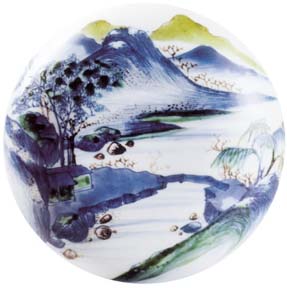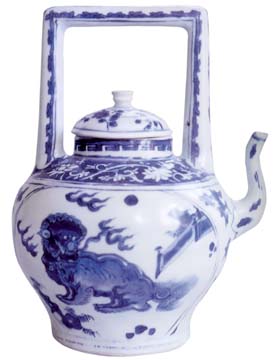


Local Color![]()

|
Fulin the boy sovereign was only 5 years old when he ascended to the throne of the Middle Kingdom. Unlike his commanding father, Hongtaiji, a central figure in the Manchu conquest of China and the establishment of the Qing dynasty, the boy served as a figurehead for powerful kinsmen led by his uncle, Dorgon. Exhibit displays Chinese
porcelain of little-known eraFulin, officially known as the Shunzhi emperor, died of smallpox in 1661 when he was not yet 23. The imperial historians did not treat his short reign kindly. Displeased by his conversion to Zen Buddhism and apparent preference for Han Chinese over Manchus in court appointments, they deemed his rule as insignificant and wrong headed.

|
But Fulin's era -- marked by social, political and economic unrest -- can't be easily dismissed, thanks to its remarkable porcelain wares, some of which will debut in Honolulu Thursday."Treasures from an Unknown Reign: Shunzhi Porcelain" opens at the Honolulu Academy of Arts and runs through Sept. 1 before traveling to mainland museums.
The porcelain pieces number about 90 and were drawn from public and private collections in England, France and the United States. Contributors include noted institutions such as the Ashmolean Museum at Oxford, the Victoria and Albert Museum in London, and the world's largest and most comprehensive collection of 17th century Chinese porcelain amassed by Sir Michael Butler and his family.
The exhibition is the first to concentrate exclusively on the Shunzhi period (1644-1661), which is the least known and documented of all Chinese porcelain wares. Until recently, porcelain production from this period largely has been ignored by scholars and researchers in the West and China. But these objects are gaining attention as they become recognized as symbols of artistic achievement during one of the most turbulent episodes in Chinese history.
Shunzhi porcelain has its roots in the Ming dynasty that preceded the Manchu rule. Traditionally, fine craftsmen produced porcelain of the highest quality for imperial use for the palace in Beijing, but imperial orders dwindled during the chaotic last years of the Ming dynasty. Their economic well-being threatened, due to a shrinking porcelain export market, the potters and painters had to look for new patrons.
Place: Honolulu Academy of Arts, 900 S. Beretania Treasures from an Unknown Reign: Shunzhi Porcelain
Time: 10 a.m. to 4:30 p.m. Tuesday through Saturday, 1 p.m. to 5 p.m. Sunday, opening Thursday and continuing through Sept. 1
Admission: $7; $4 for seniors, students and military; free to members and children 12 and under; free on the first Wednesday and Sunday of the month
Call: 532-8700
The wealthy merchants and the literati became the new connoisseurs of the day, encouraging the artisans to create works of art and not merely functional objects. The results were innovative colors, shapes and painting styles.

|
Shunzhi porcelain is noted for colors in blue and white, and a multicolor scheme involving blue underglaze and five colored enamels. Decorative elements ranged from figures, animals, mythical beasts, plants and flowers to narrative themes drawn from plays, novels and historical events.The porcelain painters excelled particularly in landscapes, in a style known as "Master of the Rocks." The landscapes were drawn in swirls of parallel lines, and show a close tie to the literati landscapes done on paper and silk.
The foundation laid during the Ming dynasty evolved through Shunzhi and became further refined in the subsequent Kangxi reign, which produced some of the most sought-after Chinese porcelain.
The exhibition opens with four porcelain vessels salvaged from the Hatcher cargo, a 1643 Chinese shipwreck containing 23,000 porcelain objects. Paintings from the same period, shown exclusively in Honolulu, supplement the porcelain display and help provide viewers a better understanding of the Shunzhi painterly style.
A 252-page catalogue, including color photographs of the porcelain wares, accompanies the exhibit. The catalogue is available for purchase at the Academy Shop.
Gardening Calendar
Suzanne Tswei's art column runs Sundays in Today.
You can write her at the Star-Bulletin,
500 Ala Moana, Suite 7-210, Honolulu, HI, 96813
or email stswei@starbulletin.com